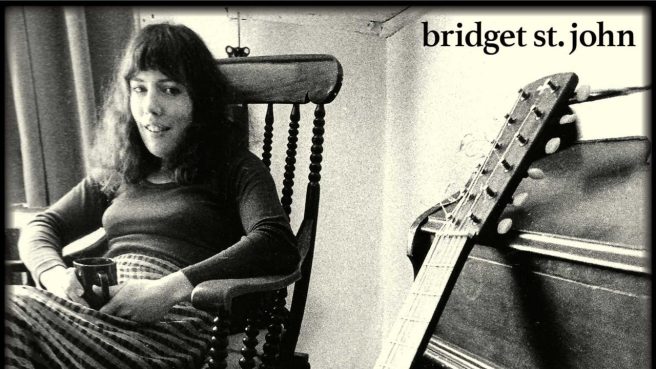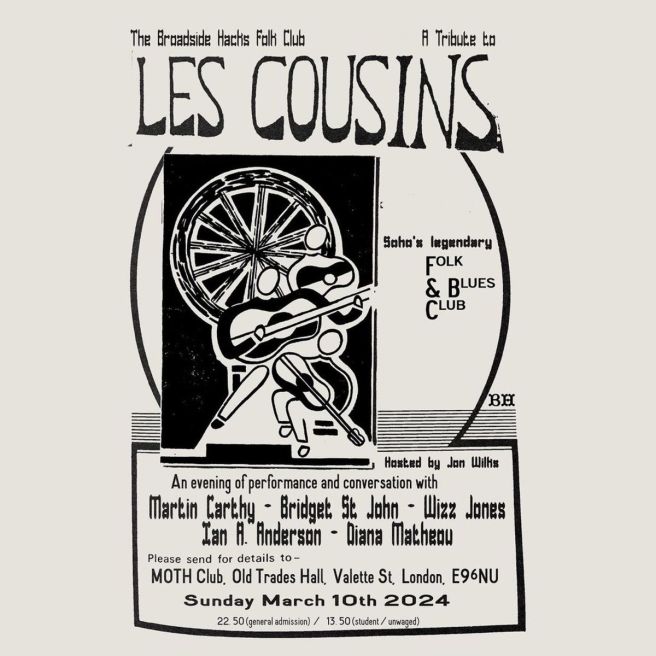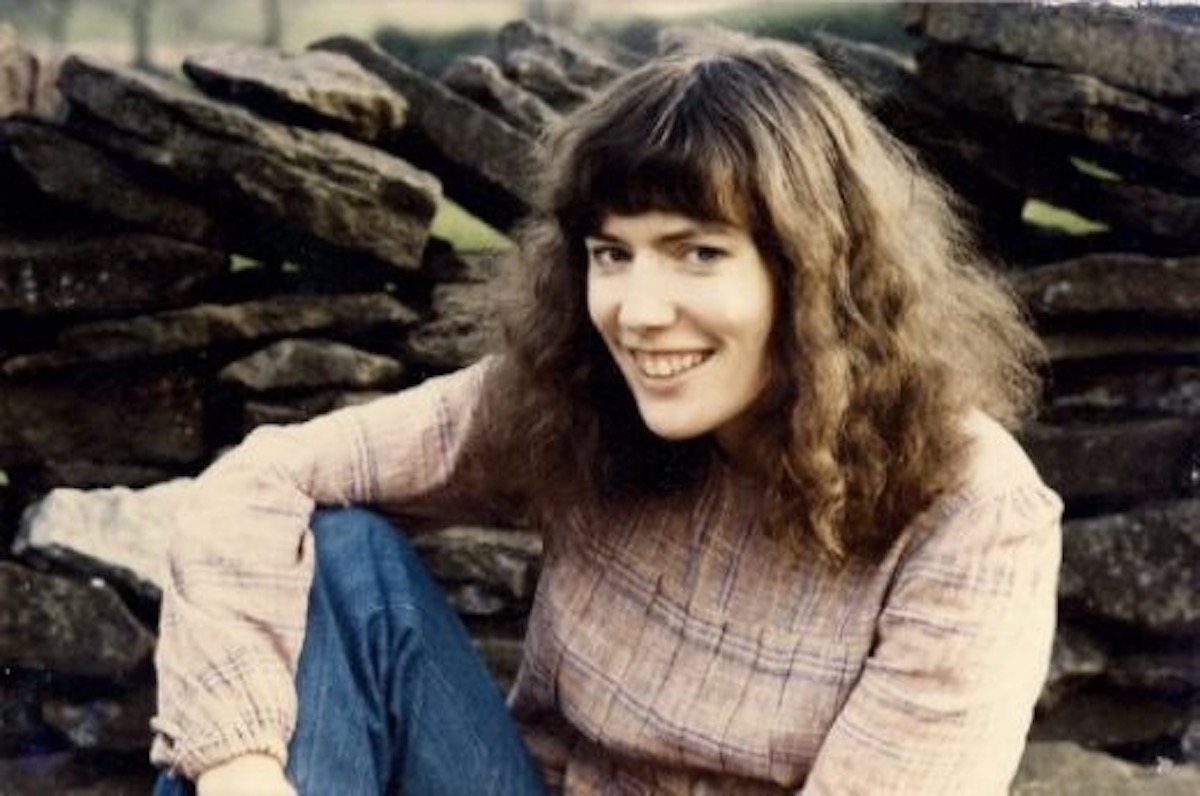
Animated by a sense of endless potential and patchwork charm, a new box set collects the influential British songwriter’s work during a transitional period.
By Stephen M. Deusner
Sparrowpit is the fanciful name of a small village in Derbyshire, a small cluster of old buildings located at a bend in the road almost halfway between Sheffield and Manchester. In 1973, the folk singer Bridget St. John settled there and wrote songs for what would become her fourth album, Jumblequeen, the centerpiece of a new box set, From There / To Here: UK / US Recordings 1974-1982. Judging by those songs—which chronicle divorce, grief, confusion, loneliness, and a very gradual recovery of self—she lived there during a period of extreme upheaval. “Her gentle man has left her after just four years of life, it became impossible to call her ‘wife,’” she sings on the song she named for that place. “Now she has no place she can call her home, has to start all over this time on her own.” “Sparrowpit” is a torrent of jigsaw syllables delivered against a runaway melody and a folk-funk arrangement. The music suggests a life moving too fast, and St. John sounds like she’d love just a moment of calm: “If you’d like to help her better, got to take her under your wing.” She might as well be singing that directly to the good people of Sparrowpit, asking for all the peace and quiet such a quaint village promises.
Jumblequeen is an album about emotional wounds, about feelings too extreme to corral or even identify. So why does St. John sound like she’s having so much fun singing these songs? “Sparrowpit” is almost jubilant, like a game she’s playing with the listener, especially when she dives into her lower register. Even on the saddest songs, though, she savors certain details, certain turns of phrase. She dispenses wisdom casually, especially on the devastating “I Don’t Know If I Can Take It.” Even at such emotional extremes, these songs make space for hope and possibility, as though St. John knows she’ll leave Sparrowpit stronger and more clear-headed than ever. “I want to be where someone loves me best of all,” she declares on “Want to Be With You,” and she makes it sound like the most perfectly natural desire of all, and a perfectly achievable one, too. Jumblequeen is, as its title implies, a piece-by-piece self-portrait by an artist who’s not quite sure how the final puzzle picture will look—but she relishes the process just the same.
Along with the dusky timbre of her voice and the bounding eccentricity of her phrasing, this is a crucial part of St. John’s appeal as a singer and songwriter: It’s not that she makes sad sentiments sound happy, but that she finds a kernel of creative joy in confronting such hardships. She seems to love turning pain into something useful, or beautiful, or fun. In other words, she doesn’t write simply to express herself. She makes music to move through the world. From There / To Here, which collects Jumblequeen along with several discs of rare and unreleased tracks, traces St. John’s movements in the late 1970s and early 1980s, recounting her story of moving halfway around the globe to find a community of like-minded souls, trying but failing to keep record labels interested, working with various producers and collaborators, and gradually settling into a more grounded life as a mother.
St. John was supposed to be a star. In 1968 John Peel started playing her music on BBC radio, in particular her single “To B Without a Hitch,” and he even started a new label—Dandelion Records—just to put her songs out into the world. Her ’69 debut, Ask Me No Questions, featured just her voice and her crisp guitar picking, and her second album, 1971’s Songs for the Gentle Man, added softly psychedelic flourishes of strings, horns, and flute. Like John Martyn and Kevin Ayers, St. John pushed against the strictures of British folk-rock, incorporating American country and R&B elements into her music, which made the press take notice even when the public did not. Dandelion had rocky promotion and rockier distribution, and the label folded mere months after releasing St. John’s third album, 1972’s Thank You For…, essentially marooning her and her potential hit single, “Nice.” Those albums were compiled on the excellent, if dully titled, 2015 comp Dandelion Albums and BBC Collection, which serves as preamble to From There / To Here.
If Sparrowpit is the “There” in that title, then the “Here” is New York City. After Jumblequeen performed no better than her previous albums, St. John was dropped by yet another label and moved across the Atlantic. She found a musical home in Greenwich Village, then more than a decade past its folk-revival heyday but still a bustling neighborhood for musicians, and she booked sessions with new collaborators and even recorded an album’s worth of material with Stuff, a popular crew of session players. It would take 20 years before those songs got a proper release on the 1995 comp Take the 5ifth, which is the second disc in this set. It shows an artist casting in all directions for inspiration, as though a new country presents a new set of possibilities. “Moody,” her first demo recorded in America, opens with a springy bossa nova riff, then blossoms into a lush arrangement with a chorus of saxophones and an electric guitar solo. But St. John wrings as much sound from the two syllables in that title, which only makes the key change at the end sound all the more ecstatic.
Occasionally Take the 5ifth and the unreleased demos on the set’s third disc sound a little too slick and professional, which distracts from her vocals and robs the music of its intimacy. The Stuff recordings in particular are moored in the marina of yacht rock, a curious development for St. John, but it brings out something in her voice and pushes her in new directions. She adopts an accusatory tone on “Chamille,” her voice like barbed wire in such a silky arrangement, and by rounding out her vowels and drawing out her consonants, she tries to stop time on “Song for John,” a eulogy for the Beatle, written and recorded in the wake of his death in 1980. What could easily have been a maudlin ballad quoting “Working Class Hero” and “All You Need Is Love” instead becomes a weirdly affecting eulogy not for the man but for what so many saw in him, all the possibilities he perhaps reluctantly represented. “This is more than a light put out,” she insists. “This was more than fire dying.”
That sense of endless potential is what makes this music so lively and rambunctious nearly half a century later, and it’s perhaps why a new generation of folk artists—including Ryley Walker, William Tyler, and Steve Gunn—has found inspiration in her work. She thrives on all these different sounds and styles: an artist in love with all the possibilities of music, the infinite ways she might sing a single syllable and all the subtle gradations of emotion a melody might convey. That makes From There / To Here a patchwork set, but St. John has always been the queen of jumble.
Source: Bridget St. John: From There / To Here: UK/US Recordings 1974-1982





